Ethiopia Distribution Systems Strengthening Project
The Ethiopian Electric Utility (EEU) currently provides 2.3 million customers with electricity in both urban and rural areas.
THE GOAL: Expediting access for millions more people.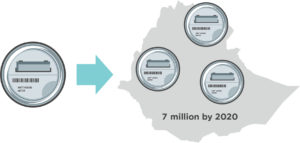
EEU seeks to modernize its planning processes and engineering systems to triple its connected consumers to almost 7 million by 2020.
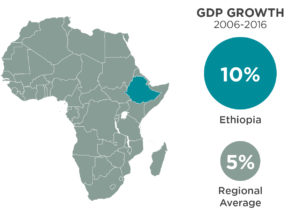
WHY: Ethiopia is one of the fastest growing economies in Africa registering a 10% GDP growth from 2006 to 2016.
Ethiopia is one of the fastest growing economies in Africa registering a 10% GDP growth compared to a 5% GDP growth in the region. Despite rapid economic growth, more than 30% of Ethiopians live in extreme poverty. To address this the Government of Ethiopia is investing in infrastructure, industry and programs to help the poor.
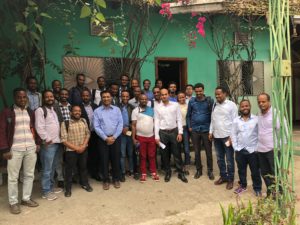
WHO: NRECA International is implementing this project with US Agency for International Development funding.
The core NRECA International staff members will train local Ethiopian professionals in the initial phases of the project who will eventually take over the tasks. This model allows for NRECA International to build capacity within its local offices, applying consistent best practices for electrification planning and project development.
HOW: Create a modern geospatial and engineering platform for electrification planning.
Both on-grid and off-grid solutions will be used to expand access and connectivity. Where and how these energy solutions can be implemented will be determined after the necessary data and information is gathered. A geospatial platform will be developed and used as a foundation for the data collection and analysis. Key to this effort is training and full participation of EEU staff to ensure that this activity can be sustained and used in the future. Running in tandem with the data collection work, the team will analyze EEU’s program management, design and construction standards and supply chain management. The team will collaborate with EEU staff to improve and strengthen business operations.
- Conducting field surveys of all EEU medium voltage networks and substations.
- Developing a geospatial and engineering platform of the existing distribution system.
- Developing investment plans on the most cost-effective ways to bring on and off grid power to various community types.
- Training EEU partners how to integrate the geospatial and engineering platforms into their current workflows and ongoing electrification plans.
- Strengthening and improving business operations by evaluating and analyzing existing design and construction standards, program management and supply chain management.
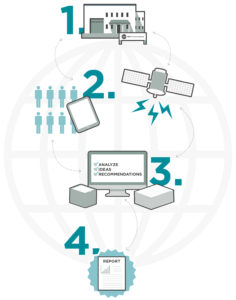 COLLECTING DATA: Reaching power lines, houses, rivers, on motorcycle and via satellite.
COLLECTING DATA: Reaching power lines, houses, rivers, on motorcycle and via satellite.
A team of enumerators will travel by motorcycle to survey all medium voltage feeders in EEU’s distribution system using a tablet based open-source platform. Key technical data and geographic locations of feeders and distribution equipment will be gathered and aggregated into a geospatial platform to streamline EEU’s electrification planning process. In parallel, a team of geospatial specialists will use satellite imagery to create a geodatabase of digitized structures, road networks, rivers, terrain characteristics, political boundaries and population data throughout Ethiopia.
ANALYSIS: Electrification access scenarios.
The data will be uploaded onto a local server on which geographic analyses will be performed. Load flow and voltage drop analysis on the distribution system will be examined per substation. In parallel NRECA International will run several scenarios within its access planning algorithm to design, evaluate and determine project cost for the lowest cost and most technically appropriate form of electrification for all of Ethiopia – including grid extensions, mini-grids and standalone system projects.
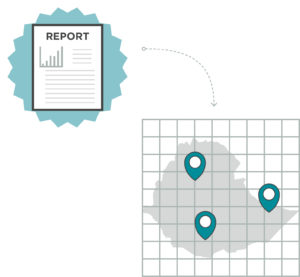 RESULTS: How to increase access.
RESULTS: How to increase access.
With the analysis complete, NRECA will provide a portfolio of grid extension projects, identify communities suitable for mini-grid development, or remote/dispersed households where standalone systems would be most appropriate. Potential investment and financing plans for high priority electrification projects in each region will also be produced.
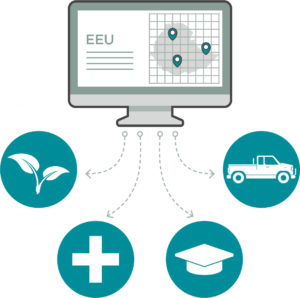 THE FUTURE: The outputs of the geospatial and engineering platform for EEU will provide tremendous value to the utility’s planning and operations departments.
THE FUTURE: The outputs of the geospatial and engineering platform for EEU will provide tremendous value to the utility’s planning and operations departments.
EEU will have:
- An integrated national geospatial access planning database that includes structures and roads.
- Electrification/access expansion investment plans.
- Engineering models for Ethiopia’s substations.
- Medium voltage data collection methodology and tools.
The benefits also will go beyond EEU, as the GIS platform integrates multiple geographic datasets on a national level, and can be used for programs in other sectors like agriculture, health, education, and transportation.